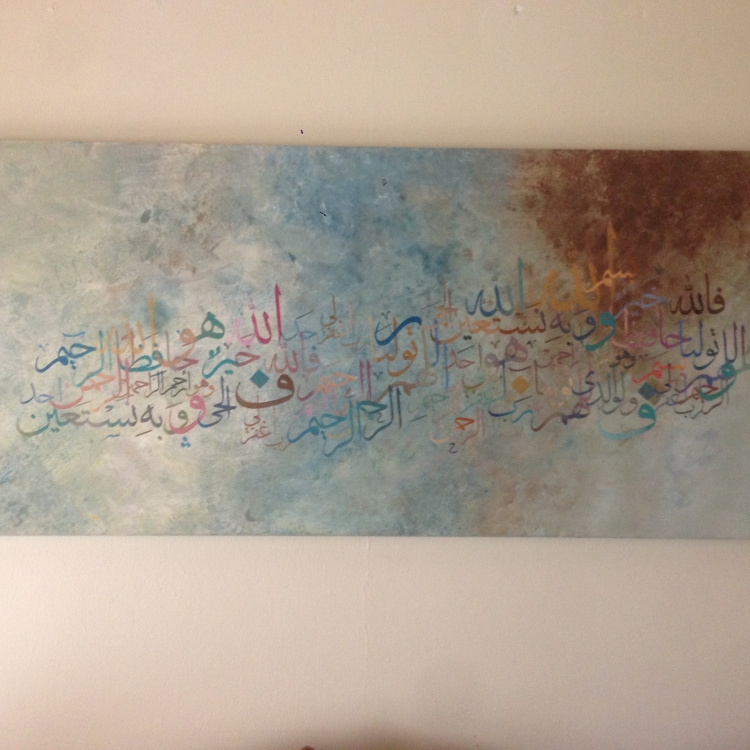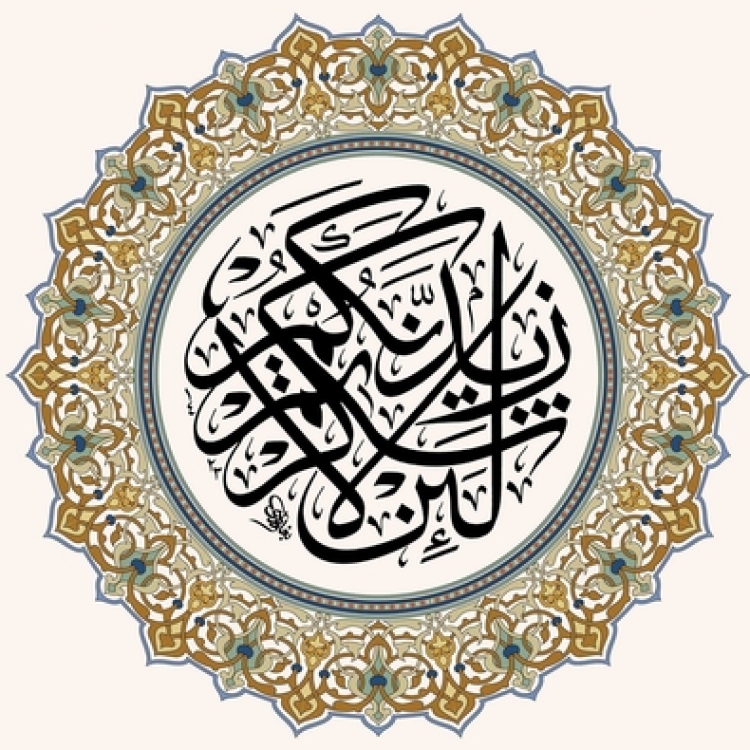Islamic calligraphy is the artistic practice of handwriting and calligraphy, based upon the alphabet in the lands sharing a common Islamic cultural heritage. It includes Arabic, Ottoman, and Persian calligraphy.[1][2] It is known in Arabic as khatt Islami (خط اسلامي), meaning Islamic line, design, or construction.
The development of Islamic calligraphy is strongly tied to the Qur’an; chapters, and excerpts from the Qur’an is a common and almost universal text upon which Islamic calligraphy is based. Deep religious association with the Qur’an, as well as suspicion of figurative art as idolatrous has led calligraphy to become one of the major forms of artistic expression in Islamic cultures.
As Islamic calligraphy is highly venerated, most works follow examples set by well-established calligraphers, with the exception of secular or contemporary works. In antiquity, a pupil would copy a master’s work repeatedly until their handwriting is similar. The most common style is divided into angular and cursive, each further divided into several sub-styles.
All works of Arabic calligraphy shown below are done by handmade, all these works are words from Quran , Hadeeth or famous man whitch have a fingerprint on the life.




